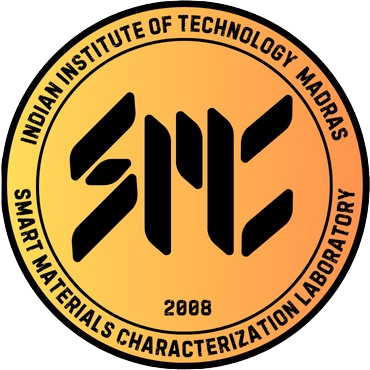Research Interests
Fatigue Analysis
Composites
Applications
Current Research Focus
Study of Corrugated structures for Wing morphing
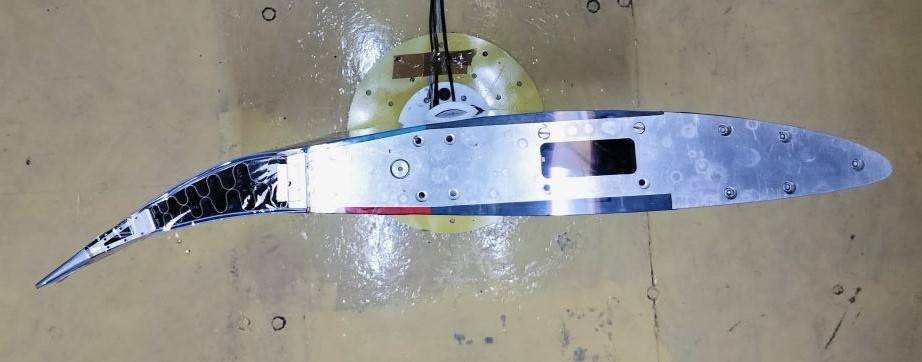
Drag minimization is one of the key objectives in the design of aircraft wings and camber morphing is a proven concept to achieve this goal. The work is focused on the development of a camber morphing wing demonstrator and perform structural and aerodynamic testing. The core morphing mechanism consists of a corrugated structure with a compliant sliding skin and actuated by a tendon actuation system. The mechanism has been retrofitted in a UAV wing with NACA 64(1)-612 profile and various structural and aerodynamic studies are conducted. The work has been funded by the Aeronautical Development Establishment (ADE), India during the period 2017-2024.
Research by: Gautam Vigneswar P N, Ph.D. Scholar
Predicting Thermal Conductivity of Core-Shell Composites Using AHM-FE
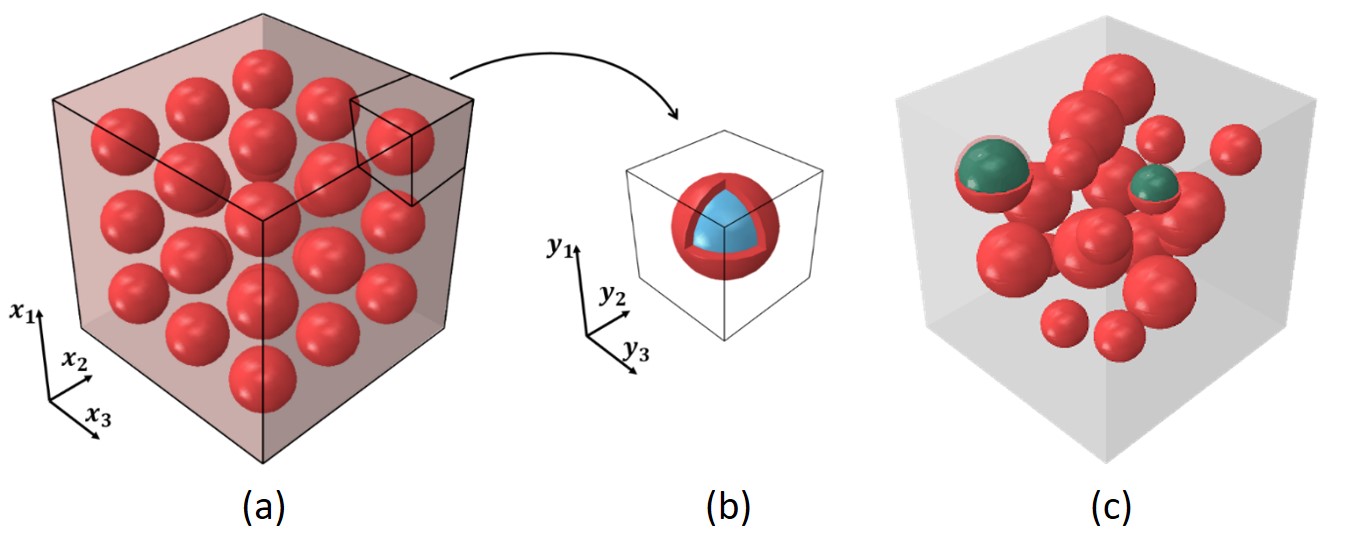
The study explores the application of the Asymptotic Homogenization Method (AHM) to predict the effective thermal conductivity of suspensions/composites containing core-shell particles. Leveraging the multiscale nature of AHM, the research bridges microscopic structural details and macroscopic thermal behavior. An analytical formulation for thermal conductivity in core-shell composites is developed using asymptotic expansions, followed by a finite element model to solve the unit cell problem. The results highlight the influence of core-shell volume fractions, material conductivities, and inclusion distribution on composite thermal performance. This approach demonstrates the potential of AHM combined with finite element analysis as a versatile tool for predicting effective thermal and electrical conductivities in complex composite systems.
Research by: Karthiban A, M.S. Scholar
Nonlinear dynamic analysis and Energy harvesting of Bistable composite laminates
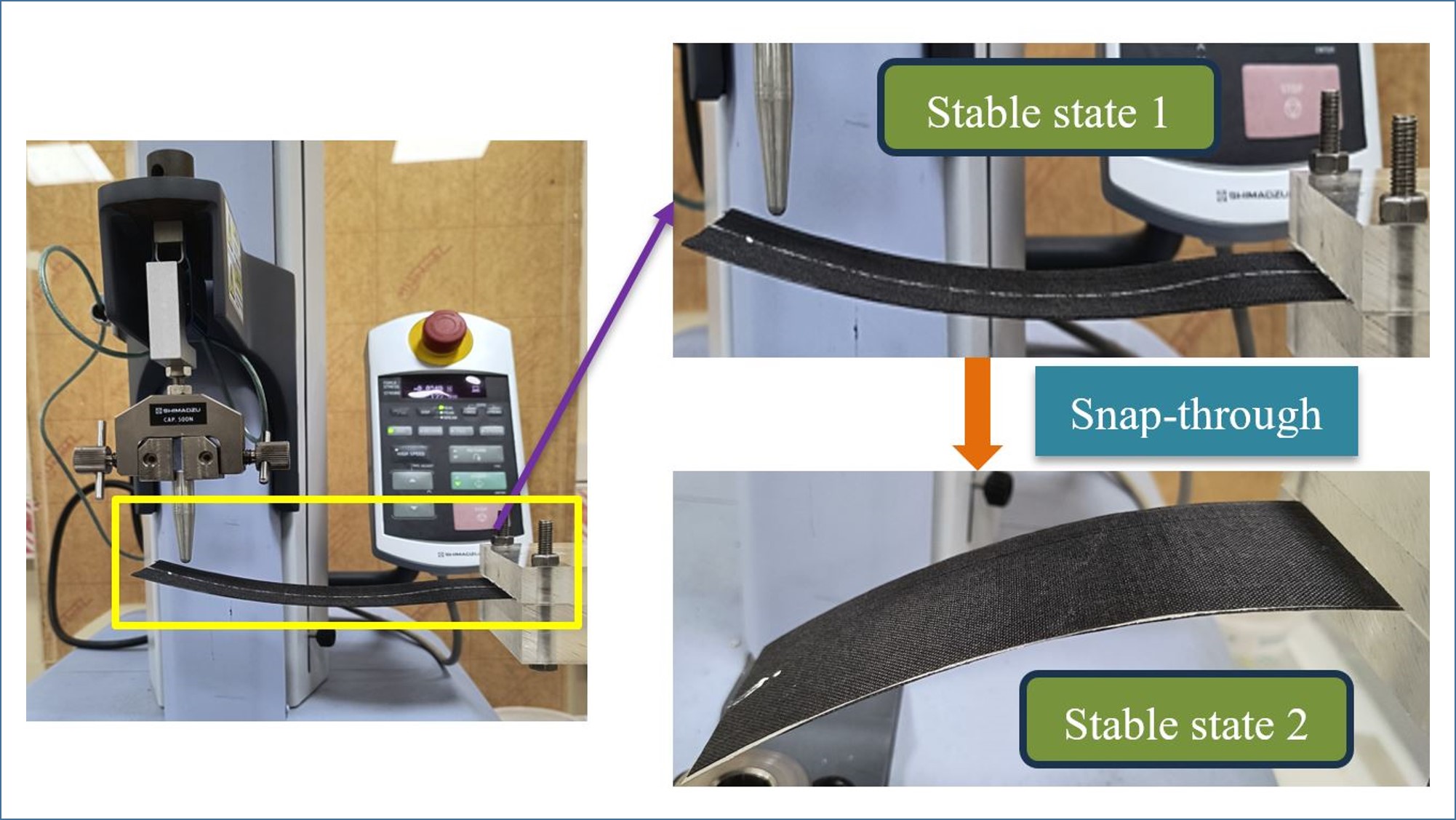
This study specifically introduces bistability through tailored geometric configurations and thermal curing. A bistable laminate features two stable states, allowing it to remain in either state without external force. The transition between these states, known as snap-through, involves significant deformation and has applications in energy harvesting and shape adaptation, making it suitable for wing morphing as well. A special type of hybrid bistable laminate has been explored here, which can be clamped from one side without losing the bistability. These laminates' energy-harvesting potential and dynamic characteristics under various excitation parameters are explored numerically, experimentally and analytically.
Research by: Paulomi Mukherjee, Ph.D. Scholar
Magnetostriction based Magnetoelectric (ME) Pressure Sensor
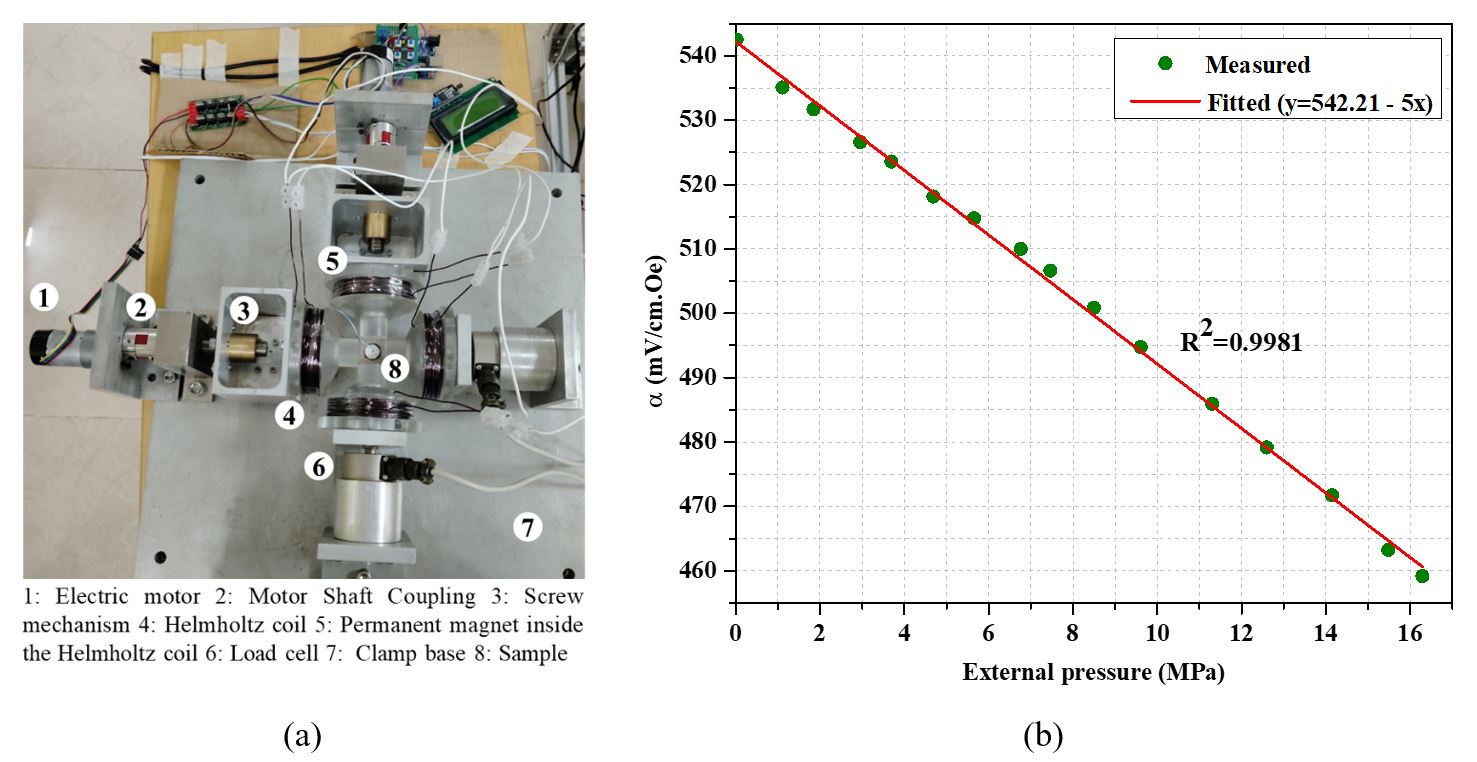
(b) Response of sensor with respect to pressure.
Magnetoelectric (ME) composites exhibit the coupled behaviour between the magnetic field and electric fields. These generate magnetization under an electric field and ferroelectric polarization under an applied magnetic field. Single-phase materials often show low ME coupling at room temperature. Due to this reason, many research works are devoted to developing a ME material in various composite forms (i.e., 0-3 composite, 1-3 composite and 2-2 composite). ME composite shows strong/giant ME coupling as compared to single phase materials especially at room temperature, which makes them highly attractive for a wide range of sensing applications. External pressure changes the magnetic state (orientation of magnetic dipoles) in magnetostrictive constituent thus the strain generated due to magnetic field is changed which leads to change in generated voltage of piezoelectric constituent in ME composite. This interaction allows for the precise detection of pressure changes through shifts in electric voltage, which can be measured and correlated with the applied pressure.
Research by: Dr. Sumit, Postdoctoral Fellow
Damping Characterization of Composites
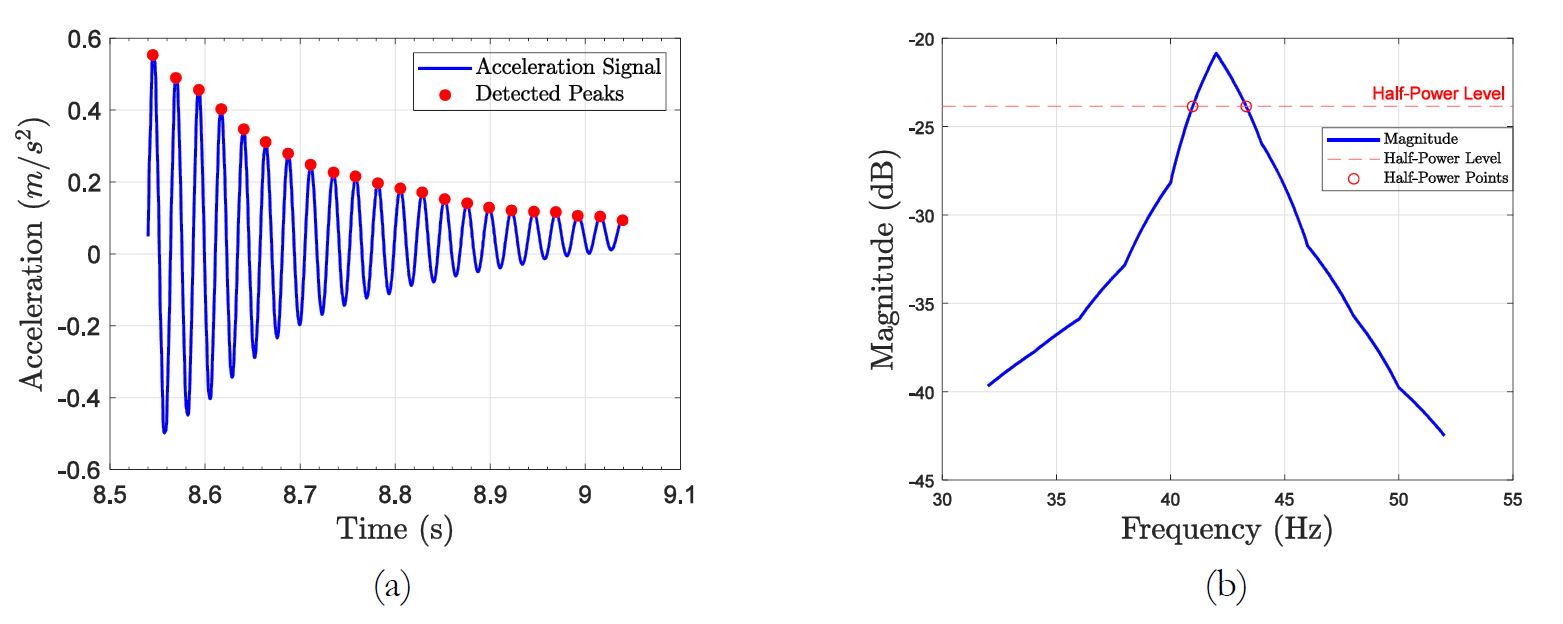
(a)Logarithmic decrement method (b) Half power bandwidth method
Composites are widely used materials all over the world in many fields such as industrial, marine, aerospace, wind energy and many more, because of its advantages like specific strength and stiffness, corrosion resistance, temperature resistance etc. However, when these composite structures are subjected to unwanted vibrations as a part of their functionality, Similar to traditional materials parts of composites may face issues like noise and it may even lead to catastrophic failure also. As a structure traditional materials have the sources of dissipation. However, except inherent damping capabilities composites don't have any other sources of dissipation. Currently, we are working on how to find the damping of composites analytically and how to predict the damping using experimental methods and exploring the possibilities to enhance the damping in composites.
Research by: Dharmateja Pachipala, Ph.D. Scholar
Effect of Graphene on static and fatigue study of patch repaired GFRP composites
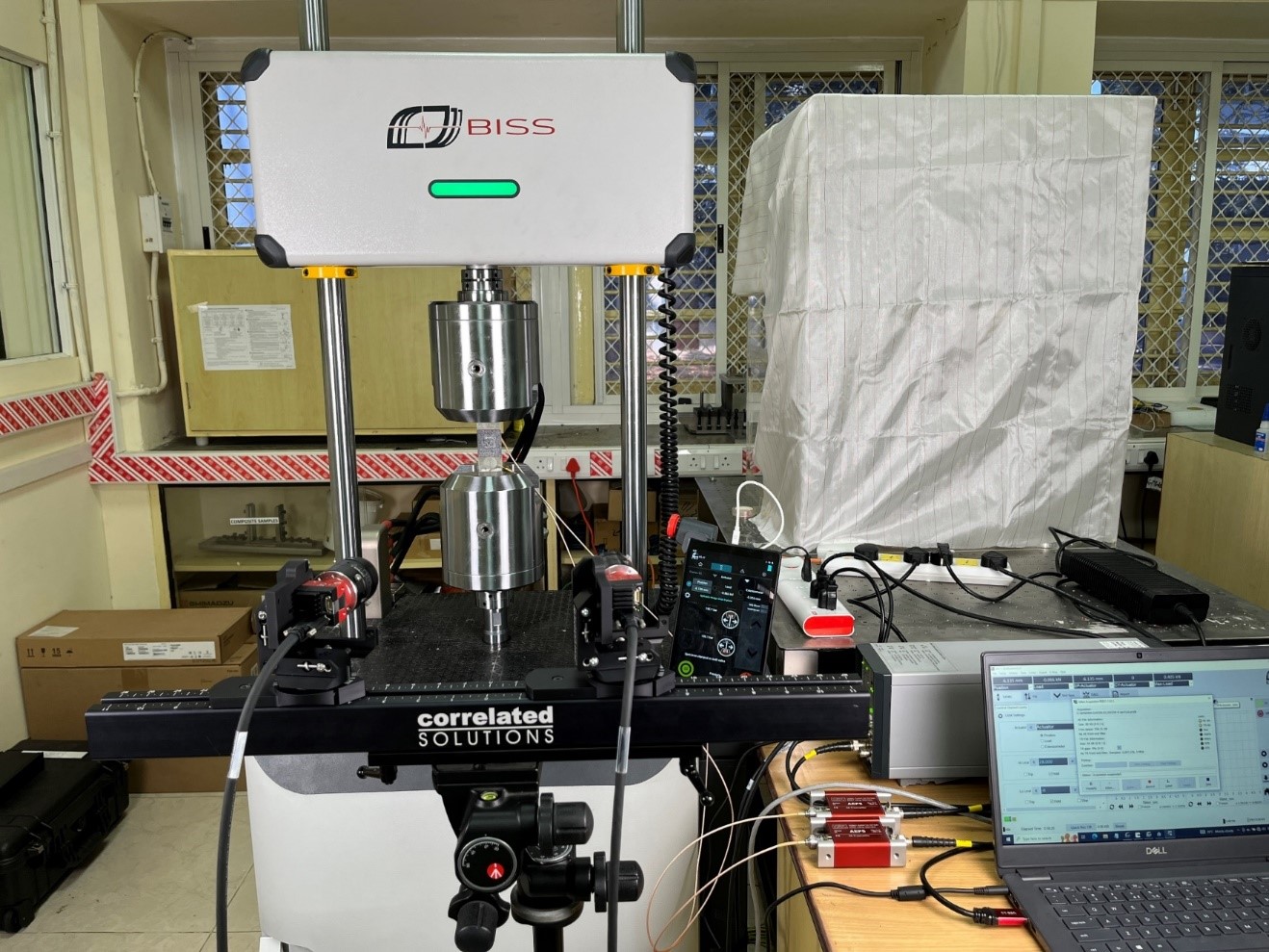
The integration of graphene into patch-repaired Glass Fibre Reinforced Polymer (GFRP) composites has emerged as a promising approach to enhance their static and fatigue performance. Graphene, known for its exceptional mechanical, thermal, and electrical properties, acts as a reinforcing agent when incorporated into the repair patches or the adhesive layers of GFRP composites. In static studies, graphene enhances the load-bearing capacity, stiffness, and ultimate strength of the repaired composite by improving interfacial bonding and stress transfer efficiency between the patch and the parent material. This results in a more robust repair, capable of withstanding higher static loads without failure. In fatigue studies, graphene contributes to prolonged fatigue life by delaying crack initiation and propagation, primarily due to its ability to dissipate energy and arrest micro crack growth. Furthermore, the addition of graphene reduces stress concentrations at the patch edges and improves damage tolerance under cyclic loading conditions. Experimental investigations reveal that graphene-reinforced patches exhibit superior durability and maintain structural integrity over extended loading cycles. This enhancement is particularly significant for applications in aerospace, automotive, and marine industries, where GFRP composites are subjected to demanding service conditions. Overall, graphene incorporation represents a transformative advancement in the repair and reinforcement of GFRP composites, ensuring enhanced performance and longevity.
Research by: Banamali Sahu, Ph.D. Scholar
Advanced Techniques for Damage Characterization and
Nanoparticle Enhancement of Repaired Laminates
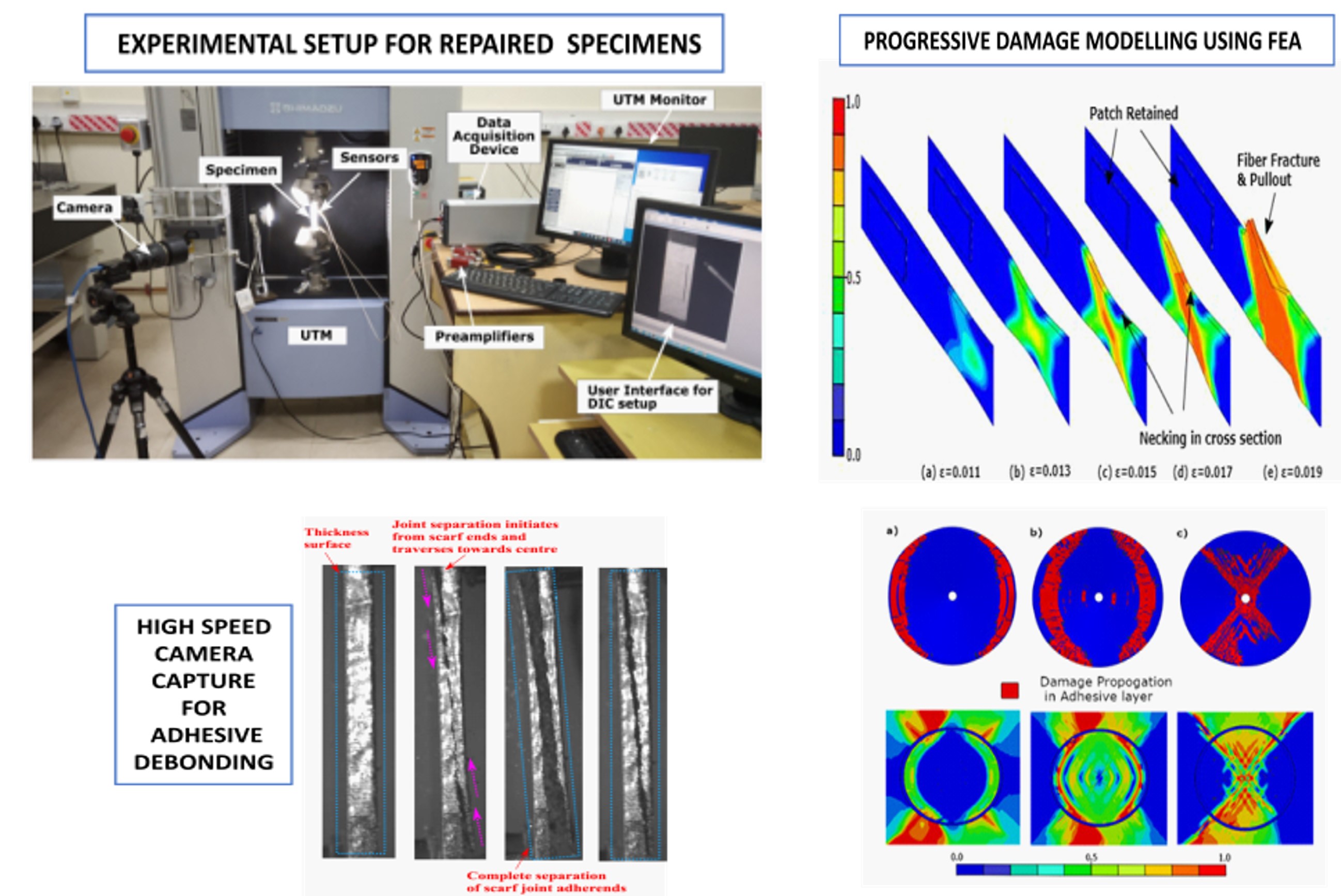
A comprehensive study was conducted on the damage modeling, failure investigation, and enhancement of patch- and scarf-repaired laminate composites. This included fabricating carbon fiber reinforced laminates (CFRP) using the vacuum-assisted resin infusion process and characterizing their mechanical properties. Damage in patch-repaired laminates was investigated through experimental techniques such as Digital Image Correlation (DIC), Acoustic Emission (AE), and high-speed imaging, along with finite element modeling based on continuum damage mechanics using ABAQUS software. Further, the failure behavior of woven scarf-repaired laminates reinforced with nanoparticles was examined, including the mechanical characterization of MWCNT/GNP-reinforced epoxy nanocomposites and micromechanical modeling using Mori-Tanaka methods.
Research by: Monika Kushwaha, Ph.D. Scholar
Concluded Research Highlights
Characterizing Multiple Solutions and Strain Assessment of Nonlinear Piezoelectric Energy Harvester
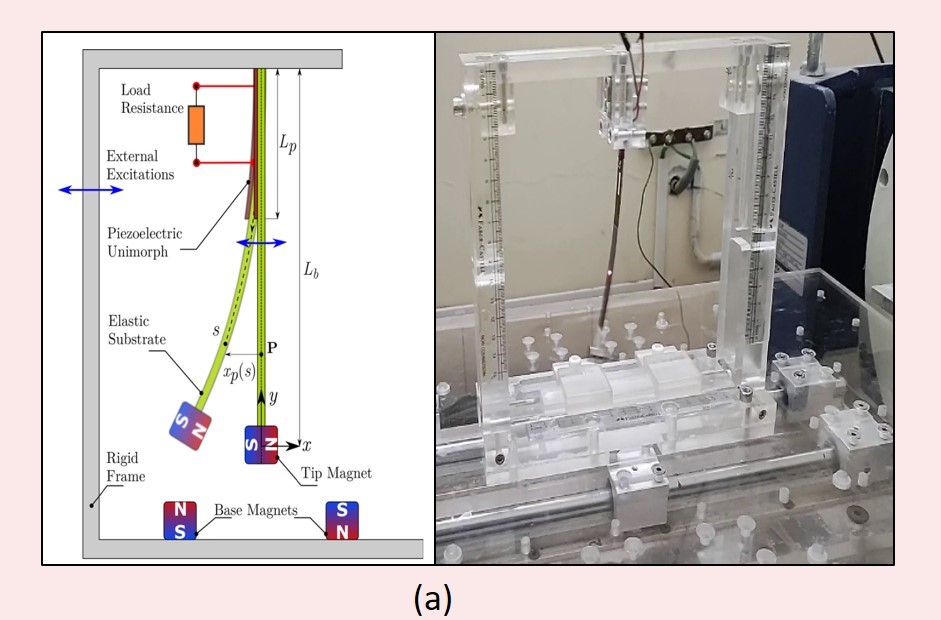
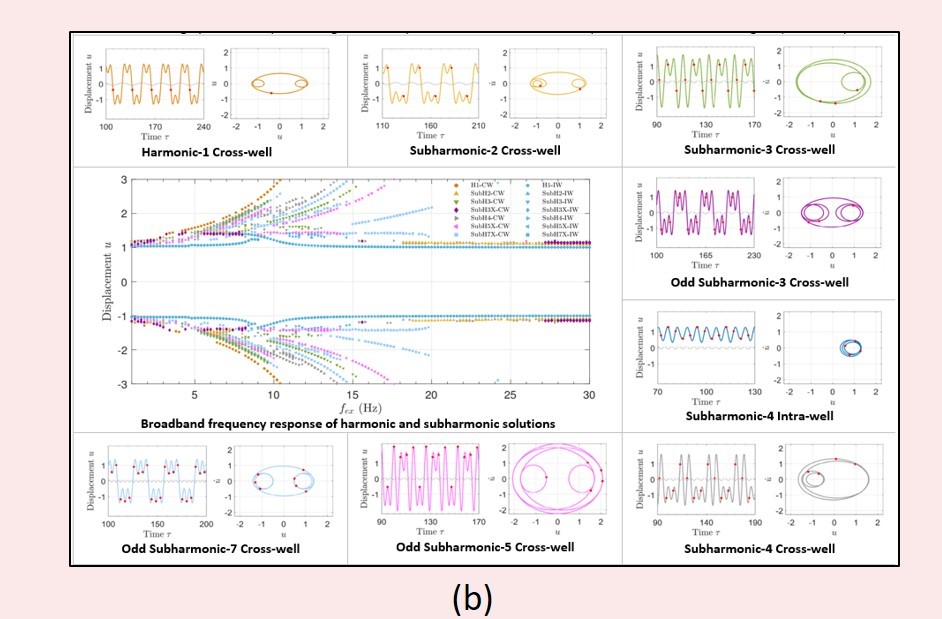
During his doctoral studies, Dr Abhijeet Giri has worked on developing nonlinear piezoelectric energy harvesting systems exhibiting wideband frequency-response with a sustained operating life of piezoelectric elements (a). He developed analytical formulations for strain assessment-based optimized design of piezoelectric unimorph and bimorph configurations for maximizing electrical output. For the characterization of enriched nonlinear behavior with multiple periodic and chaotic solutions, he presented analytical and numerical modelling approaches, and captured the multiple solutions with the experiments. The developed computational approach demonstrated a unique and autonomous characterization of multiple attractor solutions and their basins. Additionally, role of potential well asymmetries in transforming chaos-prone solutions into useful period-n subharmonic solutions was revealed. Further, he focussed on the subharmonic solutions of such electromechanical system which span over the largest frequency bandwidth and produce second highest power output. Towards this, analytical characterization of multiple harmonic-1 and subharmonic-n solutions using a modified higher-order Harmonic Balance approach was presented (b). This approach was supported with the experimental characterization of subharmonic-n responses. Apart from his doctoral thesis topic, Dr Giri has performed experiments for the electromechanical characterization of ferroelectric and magnetoelectric materials as a part of his collaborative research.
Research by: Dr. Abhijeet Giri
Post repair study of carbon-glass hybrid composites in impact, tensile static and fatigue loading environments
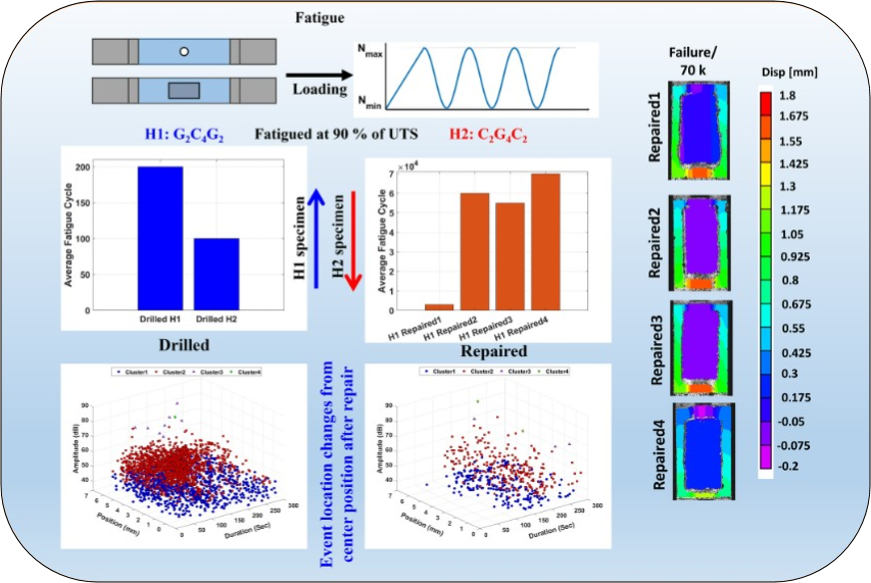
Fiber-reinforced polymer composites are favored in weight-sensitive industries due to their high specific strength and stiffness compared to metals. However, traditional composites with a single fiber type, like carbon fiber composites, have limitations such as low toughness and catastrophic failure. To address this, hybrid composites, such as carbon-glass hybrids, combine high-strength carbon fibers with tough glass fibers for better performance. Despite advantages, hybrid composites are prone to impact damage, which reduces structural integrity. Composite patch repair is a cost-effective method to restore damaged structures, making it crucial to study their repair behavior. This research focuses on the post-repair performance of carbon-glass hybrid composites under high-velocity impacts, static tensile, and fatigue environments. Repair effectiveness and parameters like ply ratio and stacking sequence were analyzed with the help of experiments and numerical models.
Research by: Dr. Chinmaya Kumar Sahoo
Experimental investigations on static and fatigue studies of patch repaired CFRP Composites
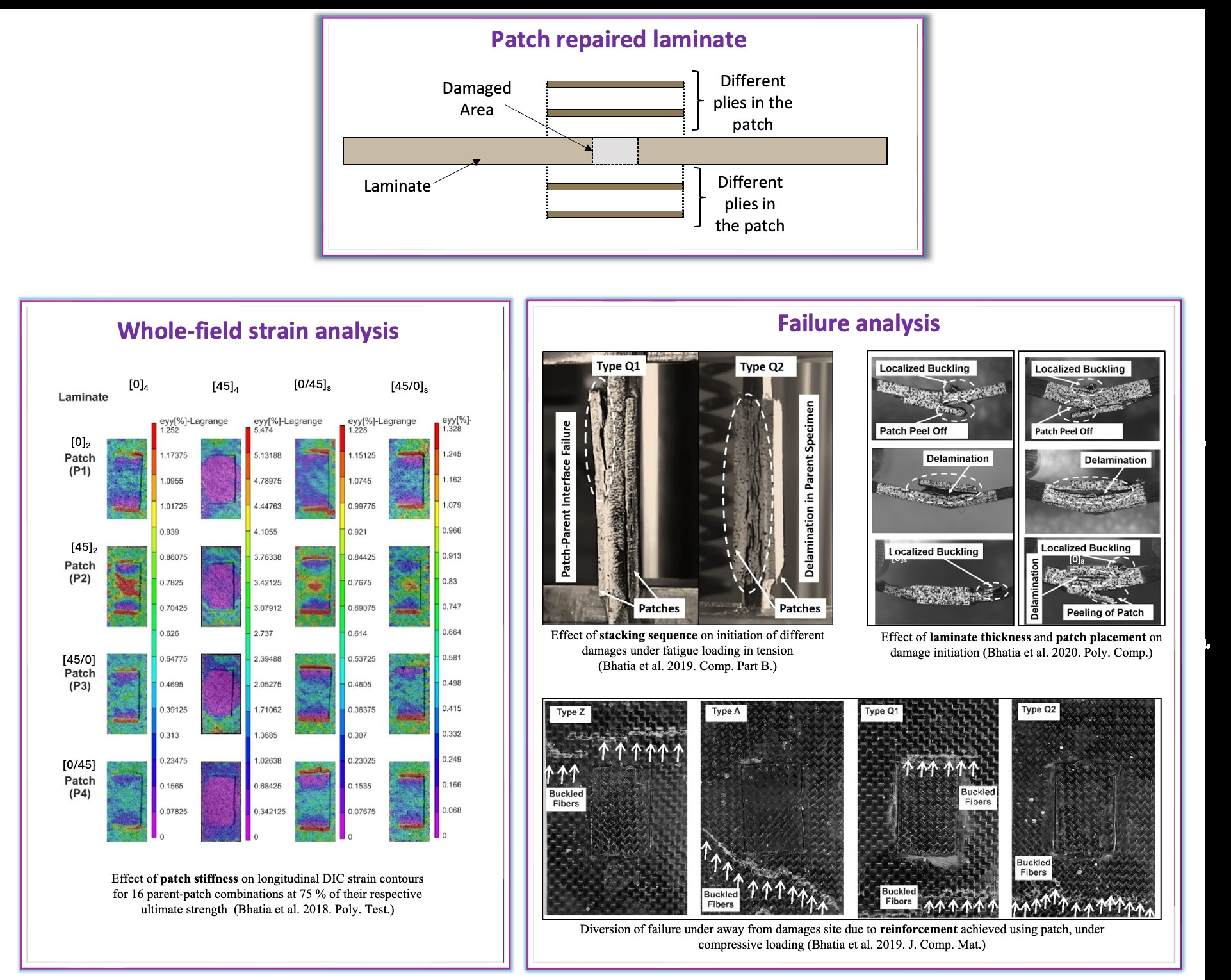
Gursahib’s doctoral research at SMC focused on evaluating the mechanical performance of adhesively bonded patch repairs in composite materials under various static and dynamic loading conditions. By analysing whole-field strain data obtained through digital image correlation (DIC), he investigated the impact of patch stiffness on strength recovery during tensile and compressive loading. His work examined critical factors such as the patch-parent laminate stacking sequence, stiffness under tensile loads, and the placement of single-sided patches under flexural stress. This comprehensive investigation stands out for its in-depth examination of post-repair damage mechanisms in laminates subjected to diverse mechanical loadings.
Research by: Dr. Gurusahib Singh
